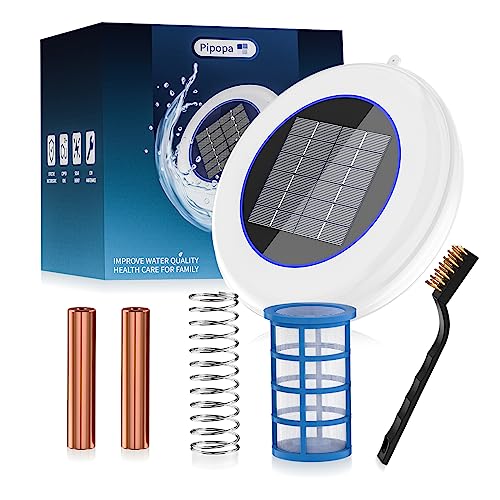The step-by-step guide will show you how to charge a solar-powered watch using the power of the sun. This will help you save on battery replacements and ensure your watch is always ready to use.
Top-selling solar watch options
Step 1: Find a source of natural light
Step 1: Locate a source of natural light to charge your solar-powered watch.
- Place your watch in an area that receives direct sunlight for optimal charging.
- Ensure that the watch is positioned in such a way that it is exposed to the sunlight throughout the day.
- In case sunlight is not available, position the watch near a bright indoor light source, such as a desk lamp or LED light.
- Make sure the light source is directed towards the watch, allowing it to absorb as much light as possible.
- Keep the watch exposed to the light source for the recommended charging time to ensure efficient charging.
Step 2: Position the watch correctly
Step 2: Position the watch correctly
To ensure your watch gets the most out of its solar power, follow these steps to position it correctly:
- Place the watch in a location where it can receive direct light. Optimal spots include windowsills or outdoor areas with ample sunlight.
- Avoid covering the watch with any objects that may obstruct the light, such as clothing or other accessories. Ensure the watch is fully exposed to the light source.
- Position the watch in a way that maximizes its exposure to the light source. For example, angle the watch face towards the light or adjust its position throughout the day to follow the sun’s movement.
By positioning your watch in a spot that allows direct light and prevents obstructions, you can maximize its solar charging capabilities and ensure optimal performance. Taking these simple steps will help your watch harness the power of sunlight efficiently.
Step 3: Monitor the charging progress
Keep an eye on the watch to monitor its charging progress. Check the indicator regularly to ensure that the watch is charging effectively. Most solar-powered watches have a built-in indicator that displays the level of charge. To do so, follow these simple steps:
- Glance at the indicator:
- Look for a small display on the watch face.
- This display may show a battery icon or a numerical value.
- Monitor the charging level:
- If the indicator displays a low or empty battery icon, the watch needs more sunlight exposure.
- If the numerical value is decreasing, it indicates that the watch is not receiving sufficient sunlight to charge properly.
- Adjust the watch’s position:
- If the indicator suggests a low charge,
- Move the watch to a more exposed area.
- Place it near a window or in direct sunlight to optimize the charging process.
By regularly checking the indicator and making necessary adjustments, you can ensure that your solar-powered watch charges effectively and keeps accurate time.
Step 4: Charge the watch for a sufficient amount of time
- Check the manufacturer’s instructions to determine the recommended charging time for your solar-powered watch.
- Place the watch in a location where it can be exposed to a light source such as sunlight or a lamp.
- Ensure that the watch is positioned in a way that maximizes its exposure to the light. This may involve adjusting the angle or position of the watch.
- Leave the watch in the charging location for the recommended duration specified by the manufacturer. This is typically a few hours to reach a full charge.
- Avoid covering or obstructing the watch during the charging process to allow uninterrupted light absorption.
- Once the recommended charging time has passed, check the watch to ensure it has reached a full charge.
Step 5: Store the watch in a well-lit area
- After charging the watch, find a well-lit area to store it.
- Avoid keeping the watch in dark places or areas with limited exposure to light.
- Storing the watch in a well-lit area helps maintain its charge and ensures that it remains functional for longer periods.
- Choose a location where the watch receives natural or artificial light throughout the day.
- Ensure that the watch is placed in a position where it can absorb the light directly.
- Avoid covering or obstructing the watch with any objects that may hinder light exposure.
- Regularly check the watch’s charge level if you are storing it for extended periods to ensure it does not completely discharge.
- By keeping the watch in a well-lit area, you will prevent it from losing charge and help maximize its lifespan.
Step 6: Recharge the watch regularly
- Expose the watch to natural light every few weeks to keep it running smoothly.
- Place the watch in a well-lit area, such as near a window or in direct sunlight.
- Ensure that the watch receives ample sunlight for a few hours, preferably on a sunny day.
- Avoid charging the watch under artificial light, as it may not provide sufficient energy for the battery.
- Keep the watch free from obstructions, such as a sleeve or cover, to ensure that it absorbs light effectively.
- Check the watch’s power level indicator regularly to determine if it requires recharging. Most solar-powered watches have a low battery warning feature.
- Recharge the watch if the power level is low. Follow the manufacturer’s instructions on how to charge your specific model.
- Make it a habit to recharge the watch even if it does not require a full charge. This helps to prolong the battery life and ensures that the watch is always ready to use.
Final thoughts
In conclusion, charging a solar-powered watch is a straightforward task that can be easily accomplished by utilizing natural light and ensuring proper placement. By consistently recharging your watch, you can ensure that it remains fully functional and ready for use at all times.
Necessary Equipment
Maximizing solar efficiency
The Optimal Method for Charging a Solar-Powered Watch: Essential Tools and Tips for Charging Multiple Watches – GShock
Instructions for Operating the Solar-Powered Watch
- Set the watch under direct sunlight: Place your solar-powered watch in an area with direct sunlight to charge its battery. Make sure there are no obstructions such as curtains or obstacles that block the sunlight
- Charge the watch fully: Allow the watch to charge fully under direct sunlight before using it. The time required for a full charge may vary depending on the watch’s model, so referring to the user manual is advisable
- Set the date and time: Once the watch is charged, set the date and time according to your preferences. Consult the user manual for instructions on how to adjust the settings specific to your watch model
- Use the watch regularly: Wearing the watch regularly exposes it to light, which ensures consistent charging. Without regular exposure to sunlight, the battery may deplete, causing the watch to stop functioning
- Troubleshooting: If the watch stops or shows incorrect time after extended periods in the dark, it may require a reset. Refer to the user manual to understand the specific reset procedure for your watch model. In case of persistent issues, contact the manufacturer or an authorized service center for further assistance
Frequently Asked Questions about Solar-powered Watches
How does a solar-powered watch work?
A solar-powered watch works by converting sunlight into electrical energy through a solar panel located on the watch face. The solar panel absorbs light and converts it into usable power, which is then stored in a rechargeable battery within the watch. This stored energy provides power to the watch’s movement and additional functions, such as a digital display or a backlight. The battery’s capacity allows the watch to function even when there is no direct sunlight available. Solar watches typically have a power reserve that can keep the watch running for several months or even years on a full charge.
What are the advantages of using a solar-powered watch compared to a traditional battery-operated watch?
There are several advantages of using a solar-powered watch compared to a traditional battery-operated watch:
- Renewable Energy: Solar-powered watches harness energy from sunlight, a renewable source of energy. This eliminates the need for battery replacements or the disposal of used batteries, reducing environmental impact.
- Cost-Efficient: Solar watches do not require regular battery replacements, which can be costly over time. Once fully charged, a solar watch can operate for months without needing any additional power.
- Reliability: Solar watches usually come with power reserve indicators, ensuring that you are aware of the charge level at all times. They have a long power reserve, so even if not exposed to sunlight for a few days, they can still function without interruption.
- Sustainability: By using solar energy, these watches contribute positively to reducing carbon emissions and the overall carbon footprint. This aligns with a more sustainable lifestyle and promotes a greener future.
- Convenience: With a solar-powered watch, you don’t have to worry about running out of battery power unexpectedly. As long as you have access to sunlight or other light sources, your watch will continuously charge, ensuring reliable timekeeping.
- Durability: Solar watches are often designed to be more rugged and durable, making them suitable for outdoor activities. They tend to be water-resistant and have sturdy construction, making them less prone to damage compared to traditional watches.
- Eco-Friendly: Using a solar-powered watch reduces the need for battery production, which involves mining and processing raw materials. This not only minimizes environmental harm but also lessens waste in terms of battery disposal.
Can a solar-powered watch still function in low-light or cloudy conditions?
Yes, a solar-powered watch can still function in low-light or cloudy conditions, although its efficiency might be reduced. Solar-powered watches typically have a built-in rechargeable battery that stores energy from sunlight. When exposed to light, whether it’s direct sunlight or artificial light, the watch converts the light energy into electrical energy to power its functions. In low-light or cloudy conditions, there is still some available light, albeit at a lower intensity, which can be utilized to charge the watch’s battery. However, the reduced amount of light may lead to slower charging and potential temporary interruptions in functionality if the stored power is depleted. Overall, solar-powered watches are designed to work in a variety of lighting conditions, but their performance may be influenced by the amount and quality of available light.






















